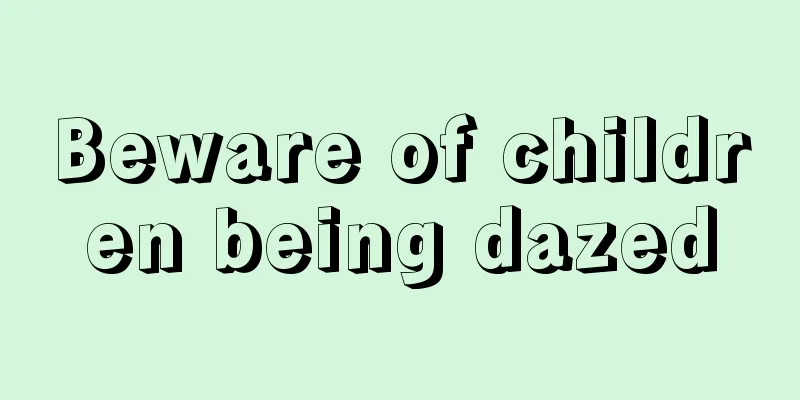Beware of children being dazed

|
Usually, people may not pay much attention to the phenomenon of children being in a daze, thinking that children may be in a daze because they are bored or tired. In fact, parents should pay enough attention to children's daydreaming. If a child is in a daze for a long time, it will affect the brain's ability to think independently, and in serious cases it will hinder the normal development of the child's brain. So, what are the dangers of children daydreaming?
Under normal circumstances, daydreaming is a stress response of the human brain to adjust to external things. For adults with self-control, daydreaming is a form of rest and adjustment. But if children often daydream, parents should pay attention and carefully observe whether the child is in a "wandering" daze or a "absence" daze, because the latter is often a sign of illness and requires immediate treatment.
1. "Distracted" daze, also known as wandering thoughts, is a situation where a child's thinking activities are out of touch with what is going on, that is, lack of concentration. It is a phenomenon that often occurs in children, often in class or while doing homework, reading, etc. Some children will also be in a daze when they are alone. The length of daze time varies, from a few seconds to several minutes. The brain structure and function of these children are normal. If stimulated during the daze, they will respond and can recall the daze experience. There are many reasons for distraction, such as the child's lack of interest in the course, intellectual disability or learning disabilities that prevent them from understanding the class content, hearing or vision problems, etc. Daydreaming is a process of self-relaxation and adjustment for normal children. Occasional distraction is harmless and beneficial to health. It can help children relieve study pressure, reduce anxiety, and alleviate brain fatigue.
"Absence" trance, also known as absence epileptic seizures in children, is a central nervous system disease caused by brain dysfunction. The peak incidence period is six or seven years old. The attack is characterized by a sudden cessation of ongoing actions, empty eyes, and loss of consciousness that lasts for five to ten seconds and then suddenly ends. The child will continue the actions before the attack but cannot recall the trance experience. During the trance, there is no response to external stimuli such as shouting and gesturing. The attack may occur several times a day. Repeated episodes of absence stupor have serious effects on children's intelligence and mental development. If a child is found to be in absence stupor, the child should be taken to the hospital immediately for an EEG examination and receive standardized diagnosis and treatment. |
<<: What to do if your child accidentally ingests preservatives
>>: What are the characteristics of children with thalassemia?
Recommend
Students ate eight foods that improved their memory
Diet plays a very important role in the normal fu...
What to do if your child has a severe cough
Children's cough is a common disease that occ...
What medicine to use for hand, foot and mouth disease
When a baby is diagnosed with hand, foot and mout...
Yellow discharge from newborn's eyes
In life, many mothers will find that their babies...
Why does a newborn’s stool smell sour?
We all know that newborns need a lot of sleep, an...
Will children grow taller by taking a nap?
Some children always feel that they are very shor...
How to measure children's IQ?
Many parents are very concerned about their child...
What are the symptoms of bronchitis in children?
Bronchitis in children is a relatively common dis...
Are newborn babies smart?
Just because a newborn has a bad temper doesn'...
What happens if children have blood in their sputum?
If a child has blood in his sputum, it is likely ...
What is the reason for the child's stomach ache?
Stomach pain is a problem that many children may ...
Falls are the leading cause of accidental injuries among children
Children's falls are completely preventable! ...
Are probiotics useful for neonatal jaundice?
It is very hard for pregnant women to be pregnant...
What are the characteristics of infantile kyphosis?
Rickets is a systemic chronic nutritional disease...
What causes baby's sweaty palms?
Today's babies are the sweethearts of the fam...









